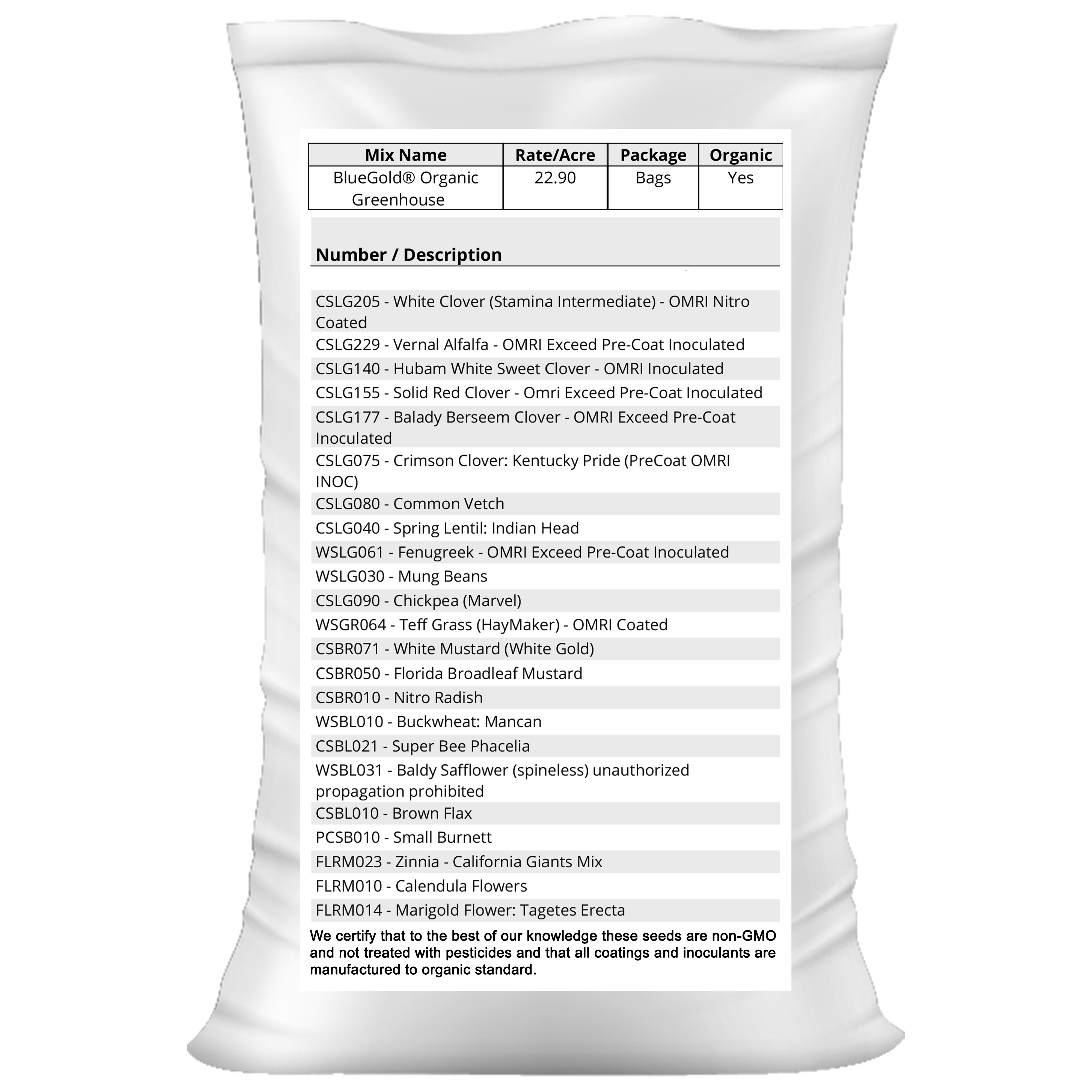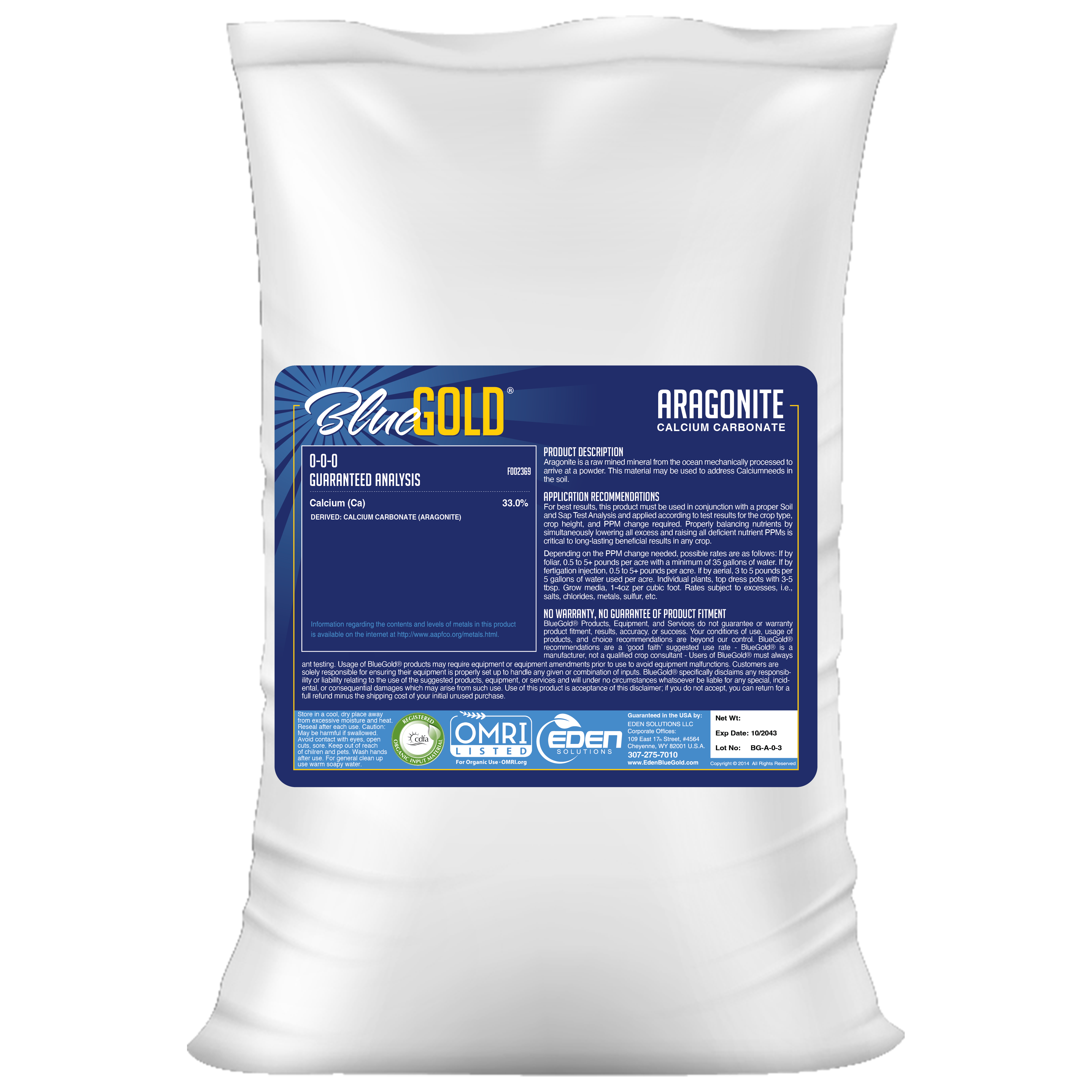
BlueGold® Animal Mineral Blend (NOP)
August 21, 2024
BlueGold® Deer Bait (Deer Attractant Spray)
August 21, 2024BlueGold® Cover Crop Seed Mix
$185.50
Cover cropping improves your soil biology and ecology, the life force of your soil. It also aids in improving the soil’s structure and weed suppression through nutrient balancing.
For more information on BlueGold® Cover Crop Seed Mix, please call us at 1-307-275-7010 or email office@edenbluegold.com.
For LTL & FTL freight rate quotes, please contact stephanie@edenbluegold.com.
NO TILL COVER-CROPPING DESIGNED FOR SOIL HEALTH & RESTORATION
Intensively managed agricultural soils have lost 50% to 70% of their pre-cultivation carbon (Lal, 2007; Zomer et al., 2017). The chief carbon transfer method to the soil is via photosynthesis and subsequent storage in plant root tissues, which decompose into Organic Matter (Kell, 2011). Because plants pull in CO2 from the atmosphere and store it in their biomass, plant residue that decomposes on fields contributes to soil carbon. Cover cropping introduces Carbon back into the soil yearly. The roots and shoots of cover crops feed bacteria, fungi, earthworms, and other soil organisms, which increases soil carbon levels over time. Previous studies estimate that the rate at which cover crops can sequester carbon in agricultural soils is 0.22 tons/acre/ year (Ruis and Blanco-Canqui, 2017). We are more conservative and say that a diverse and dense cover crop will generate 18-20% Carbon back into the soil annually.
Restoring the soil’s Carbon cycle helps correct the natural magnetic balance of the topsoil and promotes increased soil water retention, microbial activity, nutrient cycling, and other key soil processes, enhancing overall soil fertility and productivity.
Soil regeneration and proper restoration are hard uphill battles. The soil has been at the mercy of Commercial farming practices for decades and cannot be turned around overnight. The soil is very slow to move. It’s often a 3-7+ year process. Cover Cropping is a vital practice in this restoration process. It not only restores the Carbon cycle of the soil and puts nutrients back into the soil (depending on the crop you’ve chosen for your covering), but it promotes earthworms.
A diverse and dense cover crop offers earthworms a diverse crop residue diet, which is essential. It has been noted that a diverse diet from leguminous species (low C:N ratio) is more palatable to earthworms than that of mature grass and grain species (high C:N ratio). Earthworms thrive in grasslands and alfalfa. In one grassland study, 70 earthworms were counted per square foot (more than 3 million earthworms per acre). When crop residue is removed, earthworms lose their food source. It has been said that worms can lose 20% of their body weight daily in mucus and castings [this is vital for your Calcium PPMs], so they need moisture to stay alive. Cover cropping or forage, such as pasture, reduces moisture evaporation. Decaying Organic Matter (humus) holds moisture in the soil. In dry times, some species burrow deep into the soil and become inactive until rain ‘reactivates’ them. You may not see earthworms in your soil until after a big rain when they come to the surface.
Cover cropping will feed the earthworms, and they will feed the Organic Matter of your soil. Organic Matter aids cation exchange, enhances plant root growth, and stimulates the increase of important soil microbes. [Brevik, E.C., 2009, Allison, F.E., 1973, Wardle, D.A.; Bardgett, R.D.; Klironomos, J.N.; Setala, H.; van der Putten, W.H.; Wall, D.H., 2004] Fertile soils typically contain 100 tons of Organic Matter per 2.47 acres (4% to 5% of total topsoil weight). [Pimentel, D.; Hepperly, P.; Hanson, J.; Douds, D.; Seidel, R., 2005, Sundquist, B., 2010] About 95% of the soil Nitrogen and 25 to 50% of the Phosphorus is contained in the soil Organic Matter. [Allison, F.E., 1973] The reduction of soil Organic Matter from 0.9% to 1.4% (assuming a soil organic content of 4 to 5%) lowered the crop yield potential for grain by 50%. [Sundquist, B., 2010, Libert, B., 1995] In one pasture study, earthworms consumed between 20 and 40 tons of soil per acre per year. In another study, earthworms were estimated to consume 4 to 10 percent of the top 6 inches of the soil annually. This only goes to show the enormous amounts of soil that can be processed by earthworms. They play a pivotal role in maintaining the productivity of our soils and it starts with cover cropping.
APPLICATION RECOMMENDATIONS AND CAUTIONARY
22.5-25# per acre or 3-4# between rows
NO WARRANTY, NO GUARANTEE OF PRODUCT FITMENT
We warrant that seeds we sell will conform to the label description required under state and federal laws with recognized tolerances. We make no warranties, expressed or implied, of merchantability, fitness for purpose, or otherwise, which would extend beyond such descriptions and in any event our liability for breach of any warranty or contract with respect to such seed is limited to the purchase price of such seeds.
| Weight | 17 lbs |
|---|---|
| Dimensions | 7.2 × 5 × 10.6 in |
| Size | 46# Bag |
You must be logged in to post a review.









Reviews
There are no reviews yet.